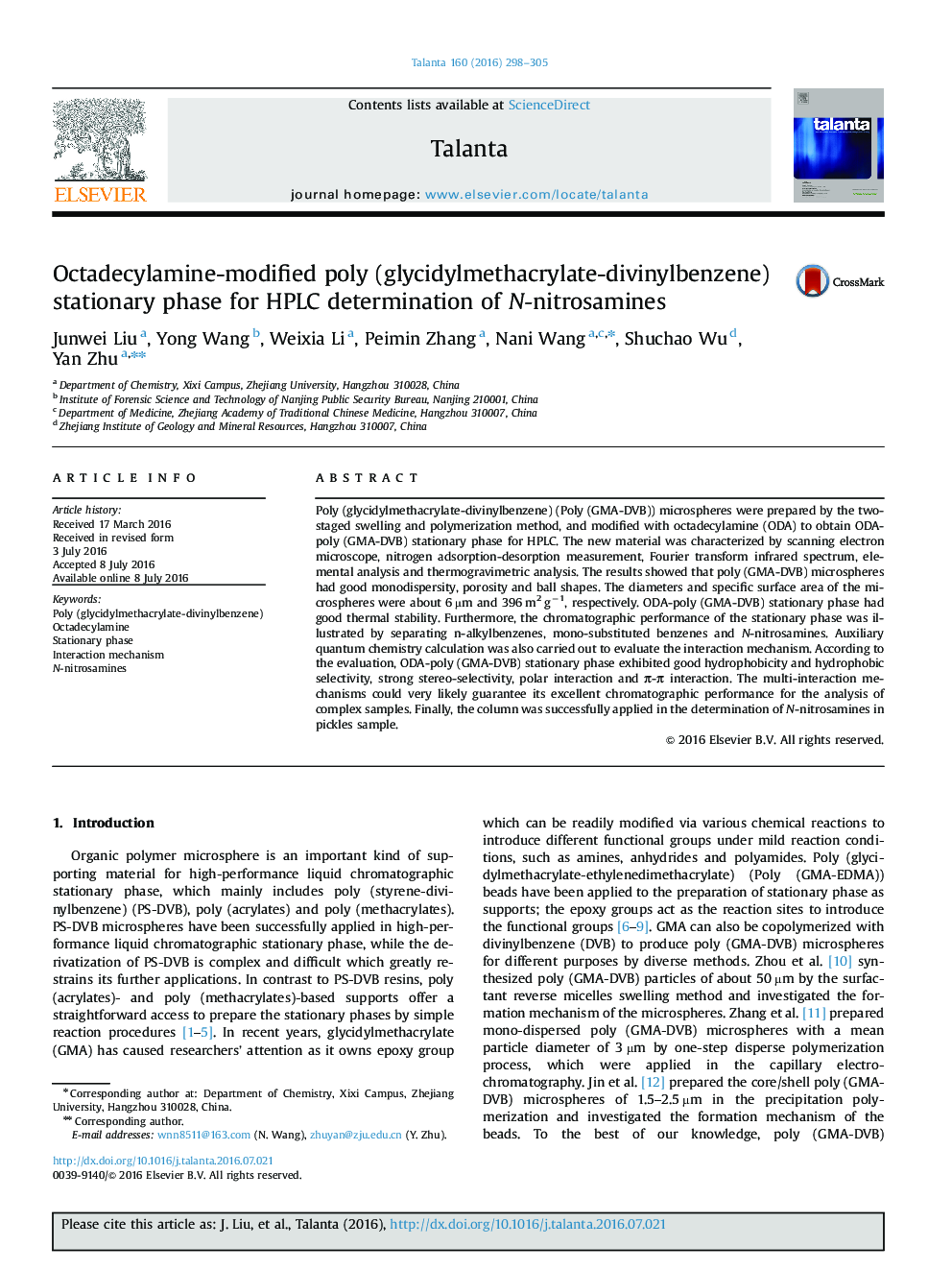| Article ID | Journal | Published Year | Pages | File Type |
|---|---|---|---|---|
| 1243261 | Talanta | 2016 | 8 Pages |
•Organic poly (GMA-DVB) microspheres were first applied in RPLC as supports.•The new prepared stationary phase exhibited multi-interaction mechanisms.•Eleven N-nitrosamines were better separated on the novel column than on ODS.
Poly (glycidylmethacrylate-divinylbenzene) (Poly (GMA-DVB)) microspheres were prepared by the two-staged swelling and polymerization method, and modified with octadecylamine (ODA) to obtain ODA-poly (GMA-DVB) stationary phase for HPLC. The new material was characterized by scanning electron microscope, nitrogen adsorption-desorption measurement, Fourier transform infrared spectrum, elemental analysis and thermogravimetric analysis. The results showed that poly (GMA-DVB) microspheres had good monodispersity, porosity and ball shapes. The diameters and specific surface area of the microspheres were about 6 µm and 396 m2 g−1, respectively. ODA-poly (GMA-DVB) stationary phase had good thermal stability. Furthermore, the chromatographic performance of the stationary phase was illustrated by separating n-alkylbenzenes, mono-substituted benzenes and N-nitrosamines. Auxiliary quantum chemistry calculation was also carried out to evaluate the interaction mechanism. According to the evaluation, ODA-poly (GMA-DVB) stationary phase exhibited good hydrophobicity and hydrophobic selectivity, strong stereo-selectivity, polar interaction and π-π interaction. The multi-interaction mechanisms could very likely guarantee its excellent chromatographic performance for the analysis of complex samples. Finally, the column was successfully applied in the determination of N-nitrosamines in pickles sample.
Graphical abstractFigure optionsDownload full-size imageDownload as PowerPoint slide
